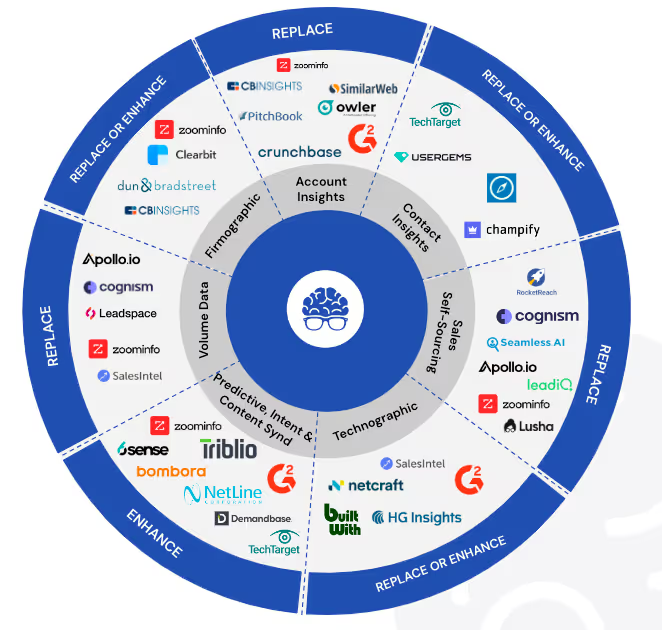There’s something intoxicating about scale. More calls. More speed. More chances. And if you're in sales leadership today, you've no doubt heard the pitch: "Parallel dialers like Nooks and Orum will 5x your team's talk time."
It sounds a lot like progress—like using a firehose to put out the drought in your pipeline. But here’s the problem with that metaphor: it ignores the terrain, the soil, and the roots. Because when you look beneath the surface, you find a strategy that’s drying out everything it touches.
Let’s talk about the difference between theory and practice.
The Allure of Parallel Dialing
In theory, it’s brilliant. Reps call five people at once. The first one who picks up gets the conversation. The rest get dropped—no harm, no foul.
Except it’s not quite that clean. Not for the rep. Not for the contact. And not for your number reputation, your pipeline, or your future ability to connect.
Why Parallel Dialers Burn More Than They Build
Let’s walk through the actual physics of what happens when you light up the phone lines with parallel dial:
1. Number Reputation Tanked by Design
The algorithms powering spam filters are smart—smarter than most of your reps and almost all of your sequencing software. They can smell parallel dialing from a mile away.
Parallel dialers tank number reputation because:
- You're calling 5x as many people per rep hour with less than 1x the conversation rate.
- Contacts who pick up and get no response (because your software dropped them) flag the number.
- Carriers see mass dialing patterns and auto-classify your numbers as "spam likely."
You’re literally asking the system to punish you. And it does.
2. Lag Kills Conversion
You finally connect… and the prospect hears silence.
That 1–3 second delay between them saying “hello?” and your rep getting routed in? That’s where trust dies.
Even the best pitch in the world can’t survive that awkward second of dead air. Human brains are tuned to sniff out “something’s off,” and nothing says this is a cold call louder than a delay. It breaks flow. It breaks trust. And yes, it breaks your rep's calendar.
3. No Governance. No Control. No Mercy.
Phone intent data (like TitanX’s scoring) gives you the keys to smart calling: when to call, how often, and who to prioritize.
But parallel dialers don't care.
You can’t set dial logic based on custom fields. You can’t throttle based on P1s vs P3s. Your reps can’t pause for context.
And worse? Managers can’t govern the process intelligently. It's brute force dialing with a glossy UI.
4. Sequencers Are Dumb to Phone Intent
Outreach and Salesloft weren’t built with phone intent in mind.
They think every lead deserves one call, two emails, a LinkedIn nudge, rinse, repeat. But in reality:
- A P1 (high phone intent) lead should get 5–8 dials in 3 days.
- A P3 (low intent) lead should maybe get one swing, then go to email-only.
Sequencers don’t support that nuance. So what happens? Your reps mass-dial P3s and neglect the hot ones.
5. Reps Will Torch Your Best Leads
Let’s be honest: most reps don’t understand how to work phone intent data.
They’ll take your P1s—your crown jewels—and throw them into the parallel dialer blender. The result?
- Wasted connects
- Poor first impressions
- Burned leads with real intent
It's like assigning your top enterprise accounts to an intern and handing them a bullhorn.
6. Low-Intent Leads Flatline After 3–5 Dials Anyway
TitanX scoring proves it: low-intent leads (P3s) hit near-zero connect rates after just 3–5 calls.
So why blast them in a parallel dialer? You’re throwing bandwidth, reputation, and rep morale into a black hole.
The better play? Cut bait. Or put them into an automated email stream. Don’t put them on blast.
7. Parallel Dialing Can Drop Connect Rates by Up to 50%
Yes, you read that right.
If you’re 5-line dialing, you’re likely slashing your overall connect rate in half. Because while your reps feel busier, the system is silently punishing you:
- Contacts who answer and get dropped don’t pick up again.
- Phone carriers deprioritize your numbers in routing.
- Conversations go cold faster.
It’s the illusion of productivity with none of the upside.
So What Should You Do?
Ditch the parallel dialer. Embrace the deliberate, high-precision approach.
Here's what works:
- Use a modern single-line dialer with SEP integration and recording.
→ TitanX is leading the way here. Real call rooms, spam prevention, and intent-driven workflows. - Dial smart, not hard.
→ Work your P1s with discipline. Don’t let reps free-fire them into a parallel queue. - Build governance into call strategy.
→ Match dial counts to phone intent tiers. Build sequences that reflect reality. - Protect your number reputation like it’s your domain deliverability.
→ Because once it’s gone, your pipeline dries up—fast.
This isn’t just about technology. It’s about incentives. Parallel dialers sell activity, not outcomes. They prey on our addiction to more, faster, louder. But the reality of modern cold calling is more human. More contextual. More precise.
So yeah, the firehose sounds fun.
But the drip irrigation system? That’s what actually grows a pipeline.




